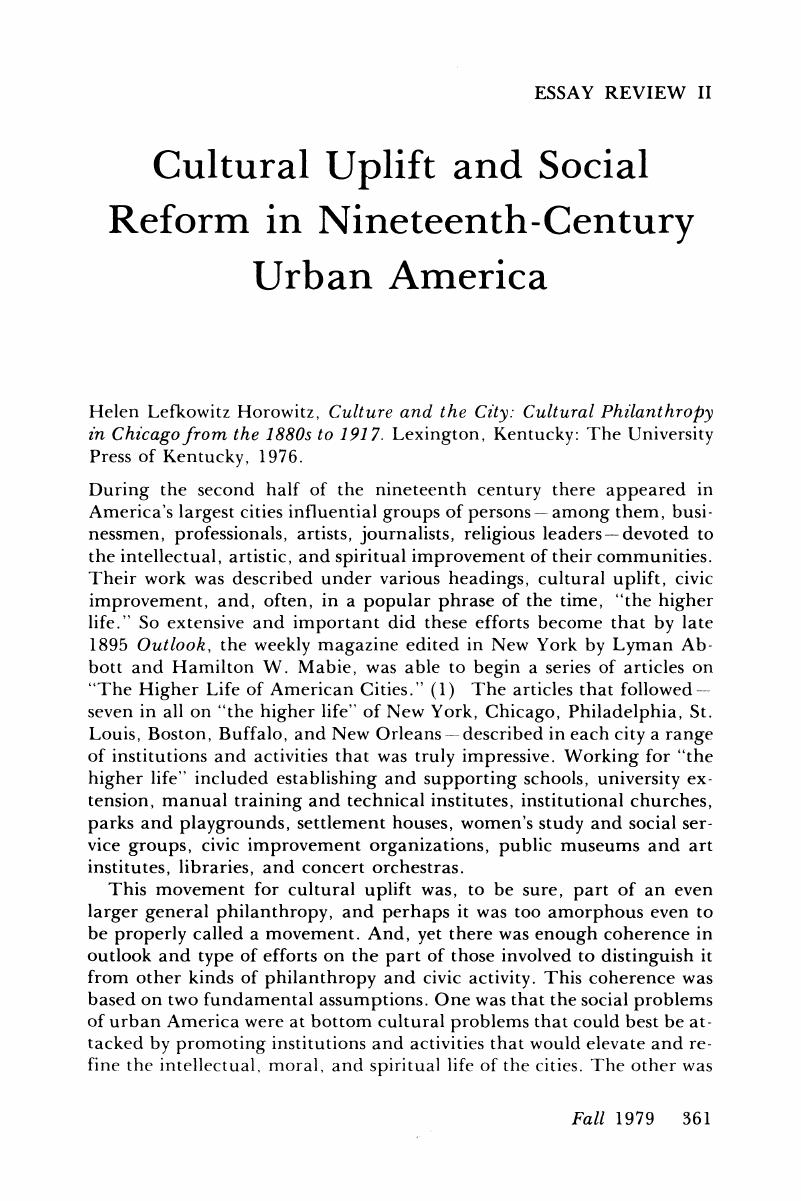Published online by Cambridge University Press: 24 February 2017

1 See Shikoh, Jane Allen, “The ‘Higher Life’ in the American City of the 1890's,” Unpublished Ph.D. dissertation, New York University, 1972.Google Scholar
2 Banner, Louis W., “Religious Benevolence as Social Control: A Critique of an Interpretation,” Journal of American History, 60 (June 1973): 23–41; Higham, John, “Hanging Together: Divergent Unities in American History,” Journal of American History, 61 (June 1974): 5–28; Howe, Daniel Walker, ed., “Special Issue: Victorian Culture in America,” American Quarterly, 27 (December 1975); Bender, Thomas, Toward an Urban Vision: Ideas and Institutions in Nineteenth-Century America (Lexington, Ky. 1975); Green, Martin, The Problem of Boston: Some Readings in Cultural History (New York, 1966); Howard Mumford Jones, The Age of Energy: Varieties of American Experience, 1865 1915 (New York, 1971), Also see, Hobbs, Susan, “John LaFarge and the Genteel Tradition in American Art: 1875 to 1910,” Unpublished Ph.D. Dissertation, Cornell University, 1974.Google Scholar
3 Duffey, Bernard, The Chicago Renaissance in American Letters (The Michigan State College Press, 1954); Duncan, Hugh Dalziel, The Rise of Chicago as a Literary Center for 1885 to 1920: A Sociological Essay in American Culture (Totowa, N.J.: The Bedminster Press, 1964).Google Scholar
4 For a similar assessment of Norton, see Green, , The Problem of Boston, pp. 122–141.Google Scholar
5 Quoted in Shikoh, , “The Higher Life in the American City,” p. 101.Google Scholar
6 Ibid., p. 383.Google Scholar
7 Basically the same profile, with minor differences, emerges also in available studies of more specifically focused New York City civic action groups. See Jaher, Frederick Cople, “Nineteenth Century Elites in Boston and New York,” Journal of Social History, 6 (Fall 1972), 32–77; also see, Hammack, David C., “The Centralization of New York City's Public School System, 1896: A Social Analysis of a Decision,” Masters Thesis, Columbia University, 1969.Google Scholar
8 Duncan, Hugh Dalziel quotes Henry Fuller as saying that to Chicago's men of wealth “Art in all its forms was an inexplicable thing; … not an integral part of the great frame of things; it was a mere surface decoration….” (Fuller's statement). Duncan goes on himself to add that “To Chicago women, on the other hand, art was very important for the staging of the self in every day life … ‘literary’ experiences for the men were gained in reading sports, politics, business, and events of the day in the local press.” Duncan, , The Rise of Chicago as a Literary Center, pp. 7–8.Google Scholar
9 Howe, Daniel Walker, “American Victorianism as a Culture,” American Quarterly, 27 (December 1975): 526–528.Google Scholar
10 Singleton, Gregory H., “Protestant Voluntary Organizations and the Shaping of Victorian America,” American Quarterly, 27 (December 1975): 557–58, passim.Google Scholar
11 See Miller, Kenneth D. and Miller, Ethel Prince, The People Are The City: 150 Years of Social and Religious Concern in New York City (New York, 1962).Google Scholar
12 Higham, , “Hanging Together:” 24–25.Google Scholar
13 See Bender, , Toward an Urban Vision, pp. 153–4.Google Scholar
14 Williams, Raymond, Culture and Society, 1780–1950 (New York 1958). p. 147.Google Scholar